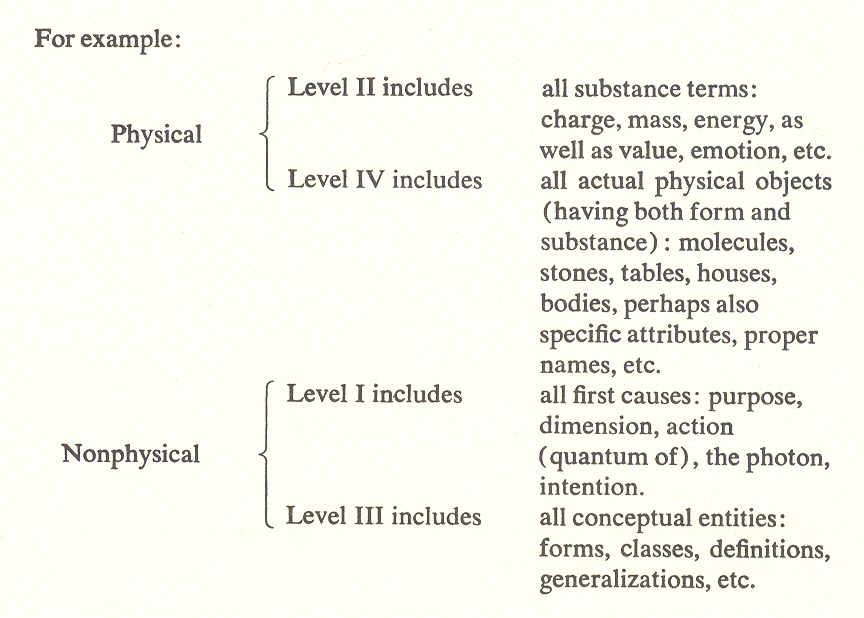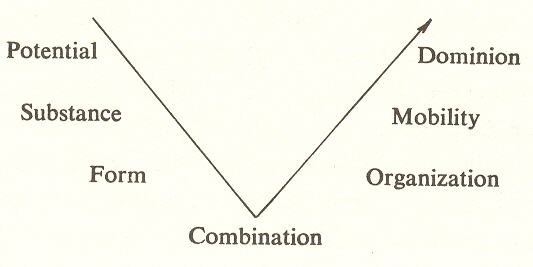
of the theory
*
Appendix I
A brief outline
1. The universe is a process put in motion by purpose.
2. The development of process occurs in stages.
3. There are seven stages.
4. Each stage develops a new power.
S. Powers are cumulative; each one retains the powers developed in the previous stages.
6. Powers are evolved sequentially in what are called kingdoms.
POWER KINGDOM
1. Potential Light
2. Substance Nuclear Particles
3. Form (identity) Atoms
4. Combination Molecules
5. Organization Plants
6. Mobility Animals
7. Dominion (Man)
7. Arc of process: The early stages of process take on increasing constraint until constraint becomes maximal, at which point there is a turn. The later stages of process see the conquest of the constraints and the development of freedom. Freedom in the first half is random, in the last controlled.

8. Levels: The "descent" and "ascent" pass through four levels in a V-shaped arc. Levels have successively zero, one, two, and three degrees of constraint, and three, two, one, and zero degrees of freedom. The stages on the right- and left-hand branches of the arc at the same level have properties in common:
Level I Purpose 3º of freedom, 0º of restraint
Level II Substance 2º " " 1º " "
Level III Form 1º " " 2º " "
Level IV Combination 0º " " 3º " "
9. Asymmetry: The stages on the left and right branches of the arc can be viewed as the inverse of one another:
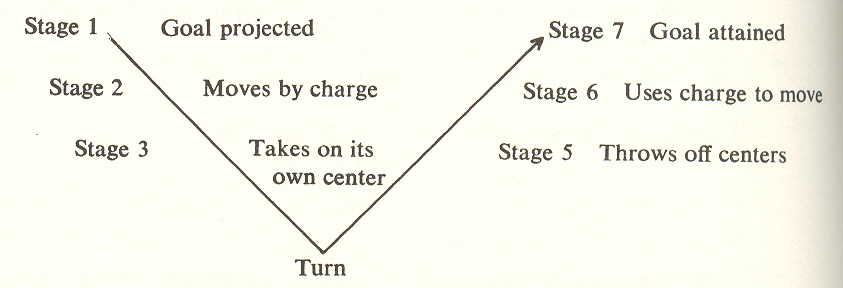
10. 1-1-2 Pattern: Each even stage begins at the beginning of the previous stage, and each odd stage begins at the end of the previous stage.
11. Self-mapping: Each stage of process (or kingdom) is itself a process in which the power of the stage develops. The development of this power occurs in stages called "substages," whose description correlates with that of the main stages.
Note: A point that is easily forgotten and which must therefore be reiterated is that atoms, molecules, cells, etc., are not separate things, but expressions of the monad (or the evolving entity) at successive stages of its evolution. At each stage it acquires a new power.
Since the powers are cumulative, a monad cannot achieve cell-ness, say, without having previously mastered molecular combination; it cannot deal with combination (as a molecule) unless it has previously learned individuation (as an atom).
The message of our study is therefore that nothing comes of itself except the initial venturesomeness. This venturesomeness, which started it all off, is always present, pushing process through its stages and acquiring greater and greater competence.
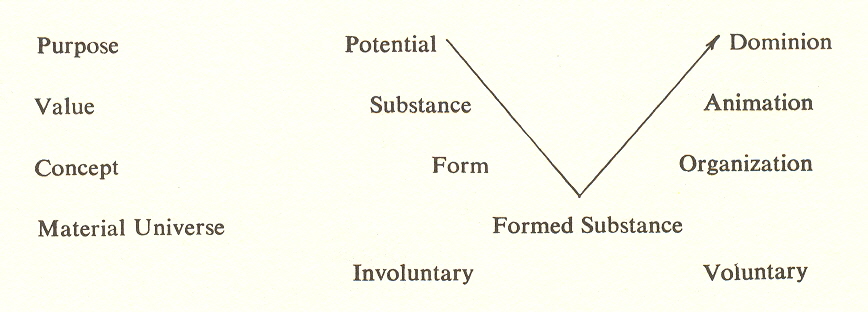
The arc: additional properties of the levels
It is helpful to point out certain properties of the arc in addition to the degree of freedom of the several levels, their symmetry, etc.
As we pointed out in Chapter XV, the upper two levels are projective and therefore nonfinite, the lower two levels are objective and finite; viz., the indestructibility (conservation) of mass energy and the immortality of the soul versus the destructibility of forms and the mortality of organisms.
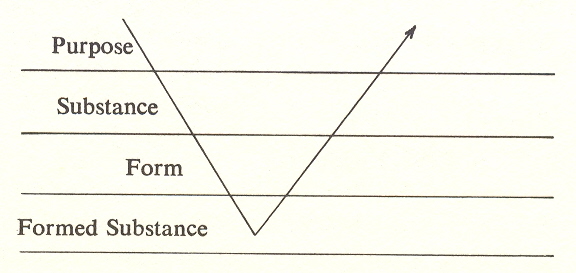
We can distinguish the first and second level by noting that the first is particular, the second general. The same distinction applies to the third and fourth levels, but in the opposite order, thus: the third level is general (because concepts are general), and the fourth level is particular (because physical objects are particular). The four word pairings can be shown in a diagram.
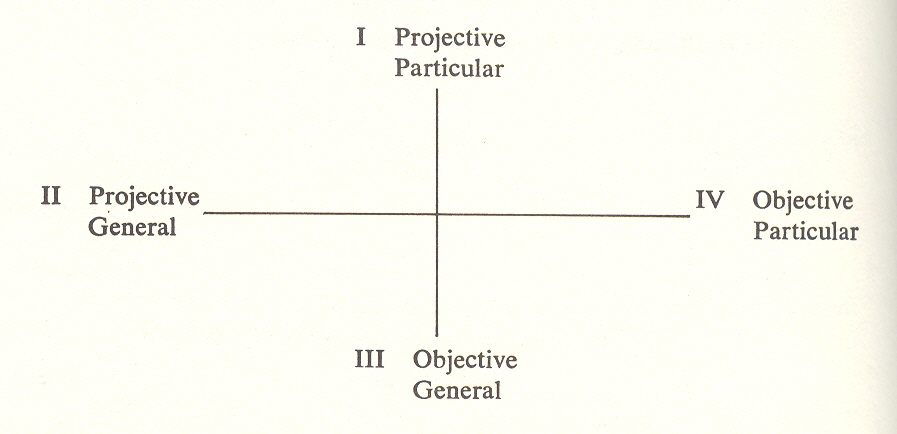
Note that the word pairs at opposite ends of each axis are doubly opposite, whereas the word pairs at right angles share one word.
The next property is that the horizontal axis is physical, while the vertical axis, levels I and III, is nonphysical.
